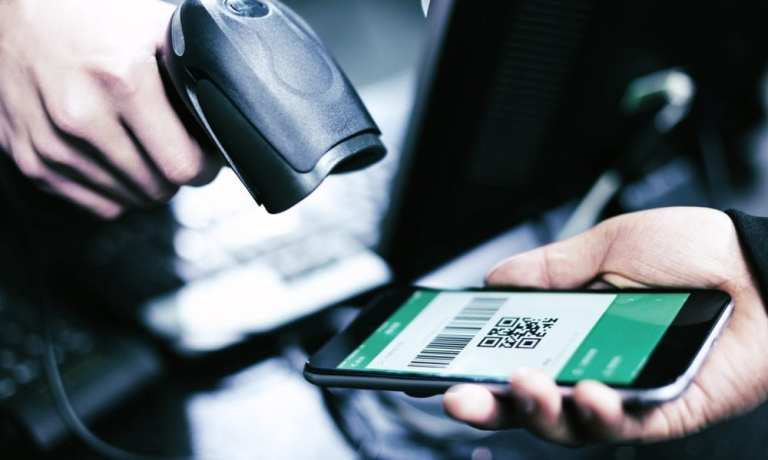Deep Dive: How Merchants Can Tap Contactless Payments And QR Codes To Drive Consumer Loyalty And Spending

 Banks, financial players and businesses abandoned many of their expectations for 2020 shopping and payment trends during the pandemic as they scrambled to respond to customers’ and clients’ new needs on the fly. One of the most game-changing — and potentially long-lasting, according to recent research — trends is consumers’ rapid adoption of contactless payment methods at the POS. This includes everything from mobile wallets to tap-and-go debit cards to QR code payments, the last of which experienced particularly strong resurgence during the months since the pandemic began.
Banks, financial players and businesses abandoned many of their expectations for 2020 shopping and payment trends during the pandemic as they scrambled to respond to customers’ and clients’ new needs on the fly. One of the most game-changing — and potentially long-lasting, according to recent research — trends is consumers’ rapid adoption of contactless payment methods at the POS. This includes everything from mobile wallets to tap-and-go debit cards to QR code payments, the last of which experienced particularly strong resurgence during the months since the pandemic began.
Consumers’ newfound appreciation for touchless payments is understandable, considering the health concerns surrounding methods like physical cards or cash. What is especially intriguing about this trend is how the pandemic has shifted consumers’ perceptions regarding certain contactless payment methods — notably QR codes. The payment technology has seen differing levels of adoption across markets, with roughly 6 percent of U.S. users having scanned such codes to make payments as of 2011, for example. The method instantly caught on in China, however, where QR code-based payment apps, such as WeChat Pay, have rapidly ballooned to claim more than a billion monthly users.
The pandemic is driving consumers in other markets to examine QR codes with more interest, however, leading businesses and financial players to delve into why this touchless payment method is capturing customers’ trust and attention. The following Deep Dive explores how the pandemic has affected QR codes’ global emergence as well as why consumers are increasingly gravitating toward such contactless payment methods instead of more traditional payment solutions. It also analyzes how these trends will grow and change in the near future, especially as consumers’ financial and payment preferences and needs shift.
How Contactless Solutions’ Rise Opened The QR Code Door
QR codes’ recent renaissance could have a large impact on the payment industry’s future. There was some speculation that QR codes would vault into the spotlight globally even before the pandemic began, with one 2019 report predicting that 11 million U.S. households would be using QR codes to scan and pay for goods and services by the end of 2020. Exactly how many American consumers tapped QR codes last year is still unknown, but the pandemic did push consumers to utilize contactless payments, resulting in a rising tide that is also lifting QR code use.
Consumers almost immediately embraced contactless payments for grocery shopping and other routine purchases once the global health crisis began, with one study noting that the adoption of such payment methods grew twice as fast as that of noncontactless payments between February 2020 and March 2020. It also found that 80 percent of consumers worldwide are now using some form of contactless payment, including QR codes. Another report found that 84 percent of U.K. and U.S. consumers have paid via QR codes, with 26 percent doing so in the month before the survey.
Restaurants are also witnessing a QR code renaissance. One-third of restaurant customers expressed interest in disposable menus when on-premises dining began returning during the summer, as these menus could be discarded after each use to reduce the risks of viral transmission. QR codes eliminate the need for disposable menus entirely, saving restaurants from the costs involved in printing them and even diminishing the risk of infection for waiters who are tossing menus in the trash.
The jump to contactless seems to have pushed up consumers’ usage of QR code-enabled contactless payments, especially at the physical POS. A recent PYMNTS report found that the number of consumers who would shop at brick-and-mortar stores if QR codes were made available is rising steadily, jumping almost 2 percentage points from June 22, 2020, to Aug. 31, 2020, to reach more than 13 percent of customers.
Another study found that this growing adoption is leading customers to desire or expect QR code-based payment options. Fifty-three percent of U.K. and U.S. consumers wanted QR codes be deployed more widely in the future, illustrating that consumers’ pandemic-driven pivot to contactless has opened the door for QR codes to take a greater role in the global payments space. The next major factor businesses must consider entails planning their future contactless innovations, especially as offering flexible access to consumers’ preferred payment methods can dramatically affect their loyalty.
QR Codes And The Loyalty Question
Consumers are placing more value on payments choice, with recent PYMNTS data indicating that customers could be more loyal to their chosen payment methods than they are to specific brands or businesses. This is important for businesses to consider as contactless payments usage grows, with the study also indicating that more consumers are starting to display this type of loyalty toward payment methods. This trend is especially pronounced among consumers who prefer to use QR code-based contactless payments, with 34 percent of these customers stating that they would avoid doing business with merchants that did not offer the method.
Offering contactless payment methods that drive consumer loyalty can be critical to merchants’ successes, especially as the fight to keep customers’ attentions becomes more challenging. Staying one step ahead of the contactless payment trend and investing in fast-growing methods, like QR code-enabled solutions, could give these businesses the edge they need to stand out in a crowded market now and down the line.